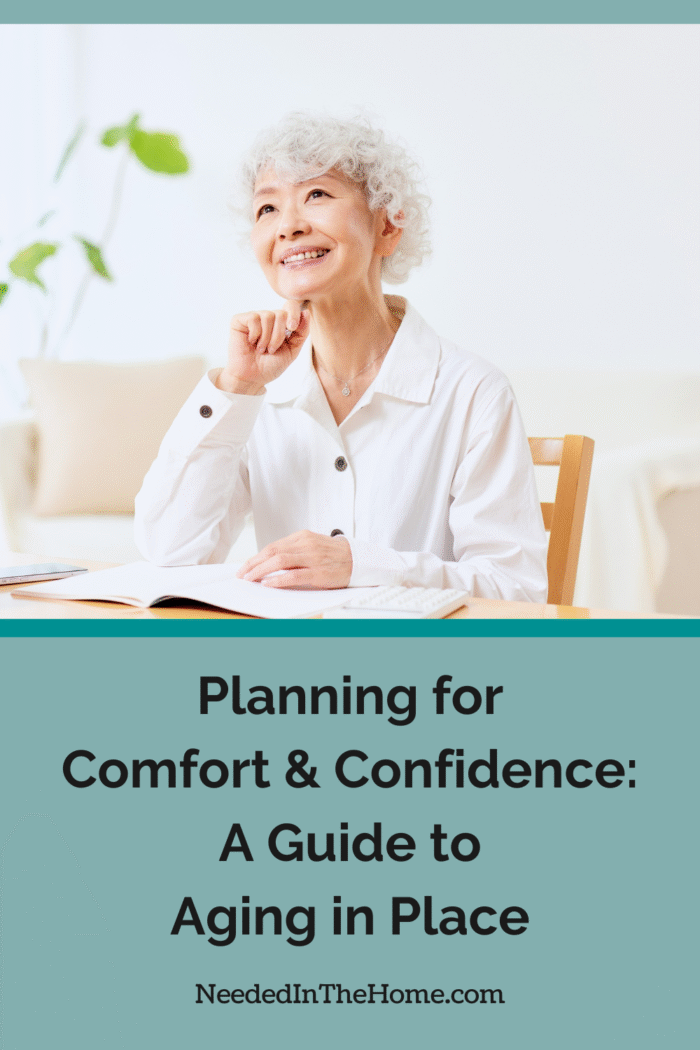
As more individuals choose to remain in their homes through retirement, the need for proactive planning becomes essential. Aging in place is not just about staying where you are; it’s about ensuring your home continues to meet your evolving needs. While many homeowners focus on cosmetic changes, the real value lies in practical upgrades that support safety, ease, and peace of mind.
Some links in this post are affiliate links, which means I receive a commission if you make a purchase.
Creating a Home That Works for You
The process of preparing a home for the retirement years is more than just replacing a few appliances; it also involves aligning your living space with how you live today and how you’ll live in the years to come. This includes rethinking everything from access to essential systems to comfort-enhancing upgrades. Lever-style door handles may replace round knobs, cabinet organizers may bring kitchen essentials within reach, and entryways might benefit from low-threshold doors or smart locks for easier operation.
It’s also worth considering long-term functionality in areas like the laundry room, bathroom, and kitchen. Installing a front-loading washer and dryer, or placing them on raised platforms, can reduce physical strain. In the bathroom, curbless showers with grab bars and hand-held showerheads are both subtle and functional improvements. These types of adjustments not only make daily life easier, but they also contribute to a home environment that promotes confidence and independence.
In addition to these updates, flooring deserves careful consideration. Transitions between rooms, such as door thresholds or uneven flooring, can present tripping hazards. Opting for low-pile carpet or slip-resistant surfaces can improve both comfort and safety underfoot. Lighting, too, should go beyond overhead fixtures. Adding task lighting in key work areas and night lights along hallways can significantly enhance visibility and reduce the risk of falls.
Thinking Beyond the Basics
While upgrading systems like lighting and HVAC is a strong start, aging in place is about creating a holistic plan that supports wellness and adaptability. Emergency preparedness becomes more important in later years, and this can include everything from backup power solutions to medical alert systems integrated with smart home technology. Reliable smoke and carbon monoxide detectors, voice-activated assistants, and automatic water shut-off valves can also be valuable additions.
Additionally, regular home maintenance shouldn’t be overlooked. Seasonal inspections of the roof, exterior, and crawlspaces can prevent small issues from becoming larger hazards. Many older homes were built with different codes in mind, so it’s important to have professionals check that key systems — from electrical to plumbing — are still up to standard.
When planning for upgrades, consider working with a local expert who understands how the needs of older homeowners differ from a typical remodel. Small decisions, like placing outlets at more accessible heights or adjusting ventilation for air quality, can have a lasting impact.
If you’re beginning your home update journey, a great place to start would be the visual guide below from Kop’s Repair, a provider of AC repair in Bensalem, PA.
This is a contributed post.
More From NeededInTheHome
Product Reviews
Get Our Books
Etsy Shop
TPT Store
eBay Store
Linktree
My Faith Testimony
Subscribe so you never miss a post.
If you find my tips useful, feel free to buy me a coffee. Thank you in advance!
Want to remember this? Pin it to your favorite Pinterest Board!

Join the newsletter
Subscribe to receive our latest articles and promotional content by email from NeededInTheHome
Leave a Reply